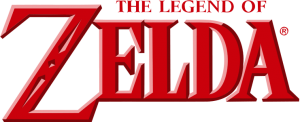What ho Lusipurr.com minions! It is I, the all powerful and mighty Blitzmage! Today I have come to discuss a matter that has plagued the fans of a certain Nintendo franchise since the early 2000’s. To give everyone a little bit of backstory, The Legend of Zelda has had a long history of the timeline blues. Nintendo has proclaimed up and down that the Zelda timeline is “locked away” but that fans shouldn’t worry about such things.
So for many years hardcore fans of the series have looked for clues in each of the games to maybe try and piece together some semblance of a coherent timeline or storyline and, in 2006, the website GameTrailers produced a video presenting the ever popular “Split Timeline” theory. The theory states that two timelines were created when Zelda sent Link back into the past after they defeated Gannon at the end of Ocarina of Time. The timeline starts out with Legend of Zelda: Minish Cap, then after that is the legendary Ocarina of Time, then the theory states that the timeline spits with one of the lines being the time with Adult Link being sent back seven years and becoming Young Link again (Hyrule A) and the other being the one he left behind with Adult Zelda (Hyrule B). In the A timeline the next games are Majora’s Mask, Link’s Awakening, Original Legend of Zelda, Zelda II Four Swords Adventures, and A Link to the Past. In timeline B the only two games at the time of the videos release were theorized to be Wind Waker and Phantom Hourglass. This then left three games out of the two timelines those games being Oracel of Seasons, Oracel of Time, and Twilight Princess; even though both of the Oracel games can’t be placed definitively in either of the timelines they do provide some proof of the “split timeline” theory.
Now flash forward five and a half years and three Zelda games later, Nintendo has decided to release an art book entitled “Hyrule Historia”. The book was released in Japan on 21st December 2011 for 3,255 Yen which equates to about Forty-One USD. Interestingly enough the once “locked away” timeline of the Zelda series was included in the art book… in Japanese. About a week later multiple Zelda fan sites start to receive translations of the timeline from one Joe Public. The Nintendo branded “Official Timeline” has the same basic set up as the Split Timeline theory with a few key differences. The first of two major differences is that the games on the timeline have been updated to include all the ones after the release of Twilight Princess, and the second difference is that instead of two universes created after Ocarina of Time there were three. Along with each of the games in chronological order each game and the time between them have been given an era name, for example the eras during the series newest release Skyward Sword are called “The Era of the Goddess Hylia” and “The Sky Era”. So here are the games as Nintendo has put them in the official timeline, first is Skyward Sword, second is Minish Cap, third is Four Swords and fourth is Ocarina of Time. Now after this the aforementioned three universes are created. The timeline breaks the three universes into two groups the first group being the split timeline theory with the Hyrule A&B and the second group is a single timeline in which Gannon defeats Adult Link in Ocarina of Time. So in Hyrule A, the one in which Link is sent back in time, the games are Majora’s Mask, Twilight Princess, and Four Swords Adventures. In Hyrule B, the one Adult Link was sent back from, the games include Wind Waker, Phantom Hourglass, and Spirit Tracks. Now if you, the reader, has been paying attention the a great majority of the games are in this third timeline including the original Zelda’s for the Nintendo Entertainment System. The games in this timeline include A Link to the Past, The two Oracle of games, Link’s Awakening, the original Legend of Zelda and finally, Zelda II
WOW! Well with all that in mind it seems odd that a great deal of the Zelda games gamers have played have been in a timeline in which one of the most beloved characters in video games failed, but notice that most of those games came out well before Ocarina of Time and out of those games the only one that ever references the Hero of Time is Link to the Past. Really whoever had the god awful task of trying to make the early and spin-off Zelda games fit into a somewhat coherent timeline should be given a pay raise! But really should Nintendo have gone this long without publishing the timeline? Do you think they will release updated timelines when new games come out, or will they do the typical Nintendo thing and just not really say anything about it?

